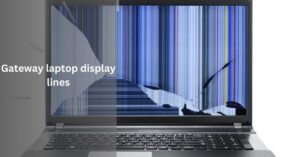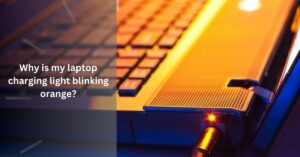Why does my laptop keep going into hibernation mode? – Know
Ever get engrossed in a project, only to find your laptop hibernates itself into oblivion, taking your work hostage?
We’ve all been there, frustration simmering as we wait for the machine to boot back up. But fear not, intrepid tech warrior, for the mystery of the disappearing desktop can be unraveled!
Here are some common culprits behind your laptop’s penchant for impromptu snoozes:
Power Plan Settings:
Think of your laptop’s power plan as its internal clock keeper. This unsung hero meticulously manages how it spends its energy when left unattended, a delicate balance between efficiency and responsiveness.
The problem? Sometimes, its settings are set a tad too aggressively, turning your laptop into an overzealous power saver.
Here’s how to reclaim control:
Dive into the Control Panel or System Settings (depending on your operating system) and seek out the “Power Options” section.
There, nestled amongst various plans, you’ll find your current one – likely the innocuous-sounding “Balanced.”
Don’t let its friendly name fool you! Within this plan lies the key to your laptop’s nap schedule.
Explore the settings and adjust the timeouts for screen dimming, sleep, and the dreaded hibernation. Think of it as fine-tuning your laptop’s internal alarm clock.
You wouldn’t want the office fire alarm going off every five minutes, right? Likewise, don’t let unnecessary shutdowns disrupt your workflow.
Tweak those timeouts to a duration that reflects your working style. Prefer to step away for quick coffee breaks without fearing a digital slumber party?
Extend the sleep timer. Working on long, uninterrupted stretches? Give the hibernation trigger a wide berth. Remember, you’re in control – don’t let the “Balanced” plan be a false prophet of premature shutdowns.
By taking charge of your power settings, you can banish the unwelcome ghost of hibernation and keep your laptop awake and ready whenever you need it.
Lid Closed, Dreams Closed:
Ah, the lid – that tempting portal to a laptop’s inner world, also a potential trigger for its untimely slumber.
It’s like a switch that throws your digital companion from wide-awake productivity to dreamy hibernation in the blink of an eye. But fear not, for the power to control this switch lies within your grasp!
Seek out the section titled “Choose what closing the lid does” (it might be hidden under “Power & sleep” or similar). This is where the magic happens!
Here, you hold the reins of your laptop’s lid-triggered destiny. For travel mode, select “Hibernate” in both the “On battery” and “Plugged in” columns. Your laptop will then gracefully snooze as you journey, protecting your work and extending battery life.
Overheating Woes:
When your machine suddenly throws itself into the digital equivalent of a hibernation cave, the culprit might be its own internal furnace.
Imagine pushing your laptop to its limits – rendering complex graphics, crunching endless numbers, battling through epic online battles.
Under such heavy workloads, the internal components like the CPU and GPU start sweating (figuratively, of course).
If proper ventilation is lacking, or dust bunnies have built a cozy nest inside, this heat can become suffocating, threatening the well-being of your digital companion.
But just like a concerned friend rushing to fan you with a towel after that marathon, your laptop has its own self-preservation tactics.
One of these is the dreaded hibernation – a forced nap to cool down and avoid overheating damage. This might be inconvenient, but consider it a cry for help from your digital buddy.
To prevent these unwanted snooze sessions, you need to become a thermal superhero! First, ensure proper ventilation – don’t bury your laptop under blankets or pillows, let it breathe!
Secondly, unleash your inner dustbuster – compressed air or a tiny vacuum can send those internal fluff-bunnies packing.
Finally, keep an eye on your CPU temperature using built-in tools or third-party apps. If it consistently soars into the red zone, consider cleaning, upgrading cooling systems, or simply dialing back those resource-intensive tasks.
Remember, a cool laptop is a happy laptop, and a happy laptop is a productive laptop. So, become a champion of thermal management, and your digital companion will reward you with uninterrupted work sessions, free from the clutches of involuntary hibernation.
Now go forth, vanquish the dust bunnies, and keep your laptop cool as a cucumber, ready to conquer any digital challenge!
Driver Doldrums:
laptop, like a weary traveler overcome by an inexplicable drowsiness, has plunged into the abyss of hibernation. You curse under your breath, forced to wait through the agonizing reboot sequence, all because of… a driver?
Yes, my friend, sometimes the culprit behind these unwelcome snoozes isn’t a power setting gone rogue or a dust bunny infestation, but rather a silent villain lurking within your system: outdated or faulty drivers.
Think of drivers as the invisible language translators between your hardware and operating system. When they’re outdated or glitching, the communication gets garbled, leading to all sorts of digital hiccups, including, you guessed it, unexpected hibernation.
Display drivers, the interpreters for your screen, are particularly prone to these slumber-inducing malfunctions.
When they’re buggy, they might misinterpret your laptop’s internal temperature, mistaking a normal operating range for a dangerous overheat, and triggering the hibernation protocol as a safety measure. Similarly, chipset drivers, the behind-the-scenes coordinators of your system’s core components, can also misfire, leading to power management issues and, yep, you guessed it again, more unwanted shutdowns.
But fear not, there’s a simple cure for these driver doldrums: regular updates! Think of it as giving your laptop a digital tune-up.
Just like you wouldn’t let your car run on ancient oil filters, don’t neglect those vital software updates. Most operating systems offer built-in driver update tools, and many hardware manufacturers provide dedicated update utilities on their websites.
Make checking for updates a regular part of your digital hygiene routine, and you’ll be amazed at how much smoother your laptop runs, free from the clutches of involuntary hibernation.
Software Snoozes:
In the bustling digital metropolis of your laptop, hidden amongst the familiar apps and open tabs, lurk shadowy figures known as software snoozers.
These seemingly innocuous programs, masquerading as productivity boosters or eye-soothing screensavers, harbor a secret agenda: to lull your trusty digital companion into a premature slumber.
If a particular software seems overly eager to send your laptop to dreamland, consider replacing it with a more reliable alternative. Remember, in the digital realm, not all apps are created equal, and some harbor snoozing tendencies masked by helpful facades.
Don’t let rogue software lull you into a false sense of slumber; become a tech-savvy warrior, unearthing hidden triggers and wielding the power of settings adjustments.
With vigilance and a little detective work, you can banish the software snoozes and ensure your laptop remains the ever-awake ally you deserve.
Unexpected Bugs:
First, unleash the scan! Run a thorough system scan, an antivirus crusade against digital nasties.
These scans can sniff out software gremlins hiding in your code, malicious programs, and corrupted files, all potential triggers for unexpected shutdowns.
Next, don’t underestimate the power of updates! Outdated operating systems can become breeding grounds for gremlins, so keeping your software current is crucial.
Finally, if the gremlins remain elusive, it’s time to call in the cavalry – a trusted technician. They, armed with their specialized tools and diagnostic skills, can delve deeper into the hardware jungle, unearthing any rogue components or hidden gremlin strongholds.
Bonus Tip:
If you’re truly tired of hibernation altogether, you can disable it entirely through your power settings. Just remember, this will drain your battery faster when on-the-go!
Remember, diagnosing the cause of your laptop’s slumber party is key to a peaceful digital coexistence.
Read: How To Turn Off Keyboard Light In Msi Laptop? – Quik Methods
What are the benefits and drawbacks of hibernation?
Benefits:
- Saves battery life: Hibernation uses less power than sleep, so it can save battery life when you’re away from your laptop for a longer period.
- Protects data: When your laptop hibernates, it saves the state of your open programs and documents to your hard drive. This means you can pick up where you left off when you wake it up.
- Keeps cool: Hibernation can help to prevent your laptop from overheating if it’s under heavy load.
Drawbacks:
- Slower wake-up time: It takes longer to wake up a laptop from hibernation than from sleep.
- Unsaved data loss: If your laptop hibernates before you save your work, you may lose any unsaved changes.
- Potentially unexpected: Unexpected hibernation can be disruptive if you’re in the middle of something important.
FAQS
1 – When is it a good idea to use hibernation?
It’s a good idea to use hibernation when you know you won’t be using your laptop for a while, but you want to be able to pick up where you left off quickly.
For example, if you’re going to lunch but want to keep your current programs and documents open, hibernation is a good option.
2 – Can I schedule hibernation on my laptop?
Yes, you can! Most operating systems allow you to schedule hibernation at specific times. This can be handy if you know you won’t be using your laptop during certain hours, like overnight. Look for the “Advanced power settings” option within your power plan settings to set custom schedules.
3 – Will hibernating damage my laptop?
No, hibernating your laptop is safe and won’t damage it. However, frequent hibernation cycles can put additional wear on your hard drive over time. If you’re concerned about this, consider using sleep mode instead when possible.
Conclusion
The culprit behind your laptop’s slumber party can be diverse, from power settings to mischievous software.
Embrace detective mode – check settings, update drivers, and scan for gremlins. With a few clicks and tweaks, you’ll transform your digital companion from sleepyhead to productivity powerhouse. Remember, your work-flow awaits, keep it awake!
Related Article:
How many bluetooth devices can I connect to my laptop? – Untwist the Bluetooth Web





